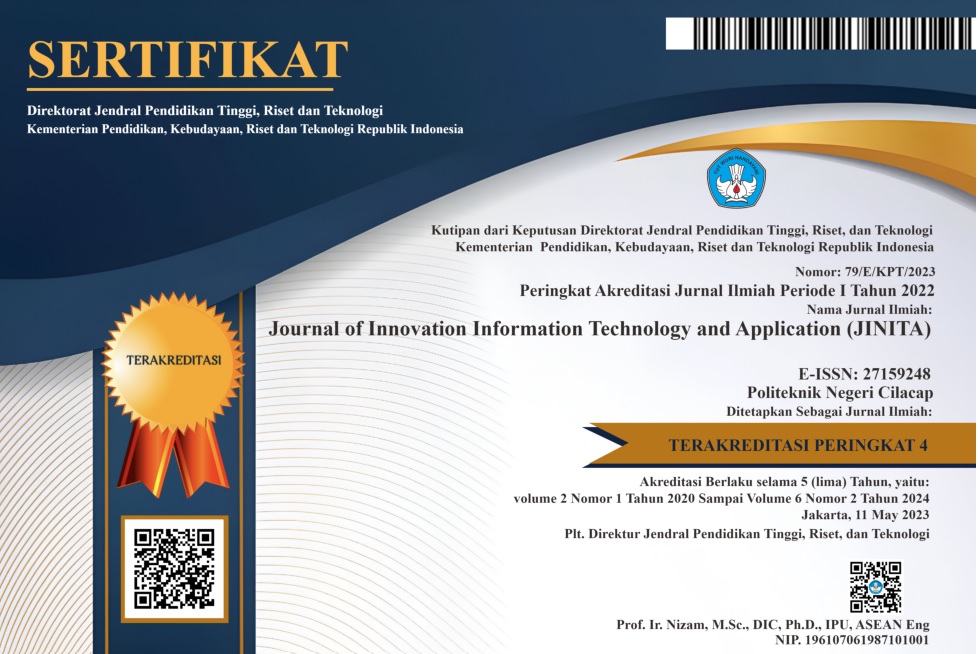Exploring the Implication of ChatGPT AI for Business: Efficiency and Challenges
 Abstract views: 1642
,
Abstract views: 1642
,
 PDF downloads: 1426
PDF downloads: 1426
Abstract
This empirical study aims to examine the impact of ChatGPT AI on various business sectors, evaluating its benefits and challenges. Specifically, the study analyzes how ChatGPT AI is transforming business operations and enhancing customer experience in customer service, e-commerce, healthcare, finance, marketing, and developer business sectors. Using a comprehensive literature review approach, this study draws on relevant academic articles to identify and analyze the key applications of AI in the business sector, the benefits realized, and the challenges faced in adopting this technology. The study explores the implications of ChatGPT AI for businesses, including its potential to improve efficiency, reduce costs, and enhance competitiveness. Additionally, ethical and legal considerations surrounding the use of ChatGPT AI in business operations are evaluated, including issues related to data privacy, bias, and transparency. The study provides insights into future directions for the application of ChatGPT AI in business and the potential impact of this technology on various business sectors. The objective is to provide a comprehensive review of the impact of ChatGPT AI on businesses, its potential benefits, and challenges for businesses looking to adopt this technology. Overall, this study highlights the importance of considering both the benefits and limitations of AI adoption in businesses, as well as the ethical and legal implications of its use.
References
Adams, Sam, Itmar Arel, Joscha Bach, Robert Coop, Rod Furlan, Ben Goertzel, J. Storrs Hall et al. "Mapping the landscape of human-level artificial general intelligence." AI magazine 33, no. 1, pp. 25-42, 2012.
Bai, Jing, Yan Wu, Junming Zhang, and Fuqiang Chen. "Subset-based deep learning for RGB-D object recognition." Neurocomputing 165, pp. 280-292, 2015.
Bostrom, Nick. "How long before superintelligence?." International Journal of Futures Studies 2, 1998.
Bostrom, Nick. “Superintelligence: Paths, dangers, strategies.” Oxford: Oxford University Press, 2014.
Dreyfus, Hubert L. "A history of first step fallacies." Minds and Machines 22, pp. 87-99, 2012.
Esteves, João Sena, Adriano Carvalho, and Carlos Couto. "Generalized geometric triangulation algorithm for mobile robot absolute self-localization." In 2003 IEEE international symposium on industrial electronics (Cat. No. 03TH8692), vol. 1, 2003.
Gottfredson, Linda S. "The general intelligence factor.", pp. 24-29, 1998.
Kurzweil, R. "The Singularity Is Near: When Humans Transcend Biology. London: Viking." (2005): 978-3.
Müller, Vincent C., and Nick Bostrom. "Future progress in artificial intelligence: A survey of expert opinion." Fundamental issues of artificial intelligence, pp.555-572, 2016.
Martínez, D. Magaña, and Juan Carlos Fernández-Rodríguez. "Artificial intelligence applied to project success: a literature review." IJIMAI 3, no. 5, pp.77-84, 2015.
McCarthy, John, Marvin L. Minsky, Nathaniel Rochester, and Claude E. Shannon. "A proposal for the Dartmouth summer research project on artificial intelligence, August 31, 1955." AI magazine 27, no. 4, pp.12-12, 2006. Retrieved October 2006, from http://wwwformal.stanford.edu/jmc/history/dartmouth/dartmouth.html
Niekum, Scott, Sarah Osentoski, George Konidaris, Sachin Chitta, Bhaskara Marthi, and Andrew G. Barto. "Learning grounded finite-state representations from unstructured demonstrations." The International Journal of Robotics Research 34, no. 2, pp. 131-157, 2015.
Huw Price: “Cambridge, Cabs, and Copenhagen: My Route to Existential Risk,” (New York Times, January 21, 2013).
J. Schmidhuber. Deep Learning in Neural Networks: An Overview. Neural Networks, Volume 61, January 2015, pp. 85-117 (DOI: 10.1016/j.neunet.2014.09.003).
Shabbir, J., & Anwer, T. Artificial Intelligence and its Role in Near Future.ArXiv:1804.01396 [Cs], 14(8), pp. 1–11, 2015.
Copyright (c) 2023 Md Arman, Umama Rashid Lamiya

This work is licensed under a Creative Commons Attribution 4.0 International License.
Authors who publish with this journal agree to the following terms:
- Authors retain copyright and grant the journal right of first publication with the work simultaneously licensed under a Creative Commons Attribution License that allows others to share the work with an acknowledgement of the work's authorship and initial publication in this journal.
- Authors are able to enter into separate, additional contractual arrangements for the non-exclusive distribution of the journal's published version of the work (e.g., post it to an institutional repository or publish it in a book), with an acknowledgement of its initial publication in this journal.
- Authors are permitted and encouraged to post their work online (e.g., in institutional repositories or on their website) prior to and during the submission process, as it can lead to productive exchanges, as well as earlier and greater citation of published work (See The Effect of Open Access).
















